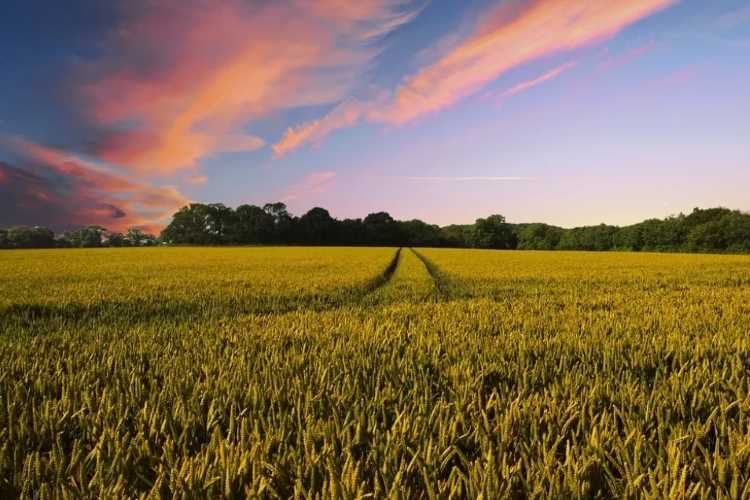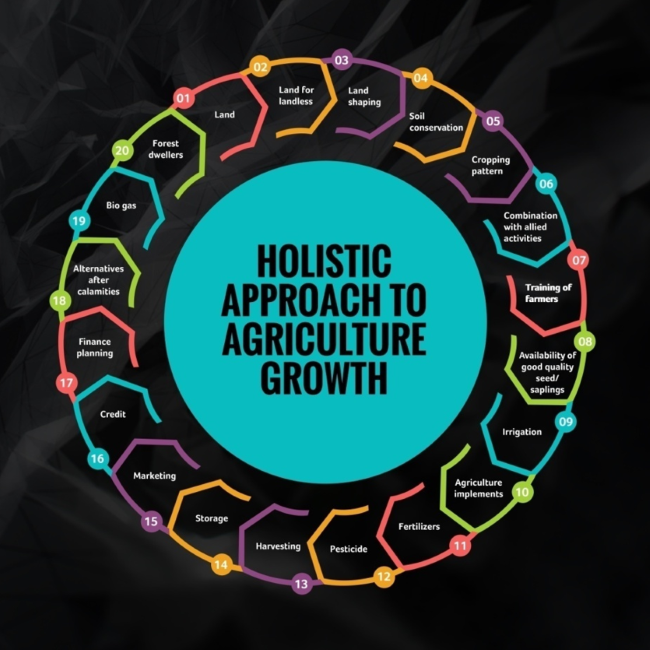
Holistic agriculture policy: The representatives of the protesting farmers and two cabinet ministers of the Narendra Modi government sat across the table on Wednesday to thrash out their differences. While there was no agreement on the core issues, the meeting managed to find some common ground between the sides. The most important outcome of the several rounds of talks was the restoration of trust that may lead to more fruitful negotiations. There is no denial that Indian agriculture is staring at a crisis, though there can be disagreements over the solutions. Lessons from history indicate that a lasting solution to the agrarian crisis can achieved only through a collaborative approach and a holistic policy for farming.
The green revolution was made possible by the close links between agriculture research, farmer and market with consistent, clear and convergent approach to the food grain shortage issue. Similar approaches have yielded excellent results across the world — take for example the potato farming success of Idaho, US that saw the university, farmer and corporates in complete sync. The corporates first created the market and funded research and the farmers were trained to grow what was needed with price and market assurance.
READ I Farmers protest: Some market-friendly options for ensuring MSP
Underestimating the understanding of farmers could be counterproductive — they know what is good for them. Farmers switched over from cotton to soybean, started growing rice in wheat areas, successfully shouldered dairy revolution, forayed into sugarcane and horticulture – all informed decisions that bore fruit. If the government wants to enhance farmers’ income and boost the local economy in a sustainable way, it should have encouraged processing industry to generate employment and income. Professional processors could have come into the picture at a later stage for further value addition. Thus, agriculture policies should not be knee-jerk reactions to crises in the form of legislation or amendments. The government should evolve a holistic approach that will enhance the confidence of the main stakeholder i.e., the farmer.

Agriculture provides livelihood to more than 70% Indians and is still the backbone of the country’s economy. However, the last few years have seen India going through a severe agrarian crisis and lower-than-expected agricultural growth. The average annual growth rate for agriculture and allied sectors has remained static in the last six years, in turn, impacting farmers’ income, according to the Economic Survey 2019-20, released on January 31, 2020. “The annual growth rate in real terms in agriculture and its allied sectors was 2.88% from 2014-15 to 2018-19, the Survey said. The estimated growth rate in 2019-20 is 2.9%,” the Survey said.
READ I MSP guarantee key to ending exploitation of farmers
This is a critical situation for a country where more than two-thirds of its billion-plus population depend on agriculture. About 115 million families are classified as farming families. Furthermore, a country with a large population has to be self-sufficient in essential food items; otherwise supply constraints could upset macroeconomic stability and growth prospects.
India also has the greatest concentration of rural households that are landless — 17 million households. Landlessness and rural poverty are closely linked. According to a World Bank report, landlessness is by far the greatest predictor of poverty in India — even more so than caste or illiteracy. A USAID country report cited government of India 2013 figures to show that “landless and marginal landholders still make up 82.8% of rural households”.
Towards a holistic agriculture policy
All of this underscore the importance of the country’s agricultural policy in determining the socio-economic status of its citizens. Whatever action has been taken so far towards policy making is incomplete. Unfortunately, at the state level agriculture strategy does not cover micro level planning. Often the broad themes that guide the central sector and centrally sponsored schemes (CSS) are reflected in the states’ agricultural plans. In many cases these are only little more than the state’s share of CSS, for which the Centre fixes the guidelines. The timely release of these funds is always an issue. Some states are guided by the schemes of the Centre than the local needs. Each state must focus on issues related to its land and climate as well as its social ethos. Apart from the scores of schemes from the agriculture department, there are programmes of other ministries and departments concerned with micro credit financing; major, minor and micro irrigation; wasteland development, and forest area projects. Things are somewhat better when the state component of the total plan expenditure on agriculture is high, but that is a rare occurrence.
READ I Why Narendra Modi govt must address farmers’ fears
It is important that integration should not remain restricted to the agriculture department alone, but should also extend to interventions of other departments such as those related to land development, rural development, irrigation, and credit schemes.
What is needed is a holistic approach that links the department of agriculture with forest department, wasteland development board, micro finance institutions like the newly created Jal Shakti banks, the private sector, suppliers of agriculture inputs as well as with subsidy schemes and programmes for the empowerment of women. All these agencies and schemes will have their specific criteria, focus, priorities and norms even when the objectives are the same. Thus, the challenge is to converge all these for an integrated policy and execution plan with both horizontal and vertical linkages.
(Dr Aruna Sharma is a development economist based in New Delhi. She is a former secretary, government of India.)
Dr Aruna Sharma is a New Delhi-based development economist. She is a 1982-batch Indian Administrative Service officer. She retired as steel secretary in 2018.

